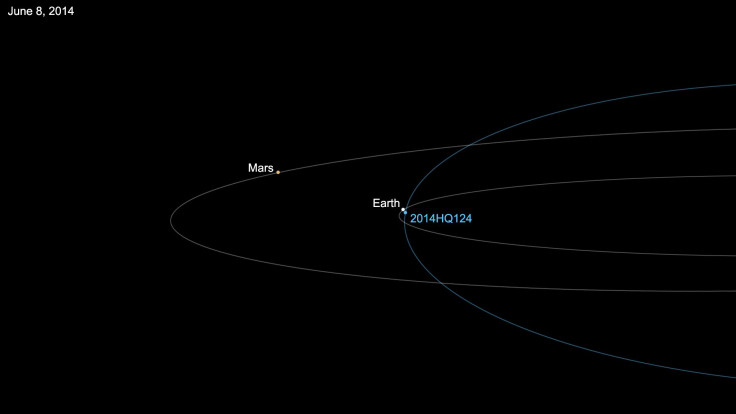Newfound Asteroid 2014 HQ124 To Pass Earth Safely On Sunday: NASA

A recently discovered asteroid will pass Earth on Sunday without posing any danger to the planet, NASA announced on Friday, saying that the space rock will fly by Earth from a distance of nearly 777,000 miles, more than three times the distance between Earth and the moon.
The asteroid, designated 2014 HQ124, was discovered by NASA’s NEOWISE mission on April 23 and was estimated to be between 800 and 1,300 feet in size. The NEOWISE mission uses a space telescope, which helps it detect infrared glow of asteroids and provide details about their actual size.
“There is zero chance of an impact,” Don Yeomans, the manager of NASA's Near-Earth Object Program Office at NASA, said in a statement. “In fact, it's fairly common for asteroids to pass near Earth. You'd expect an object about the size of 2014 HQ124 to pass this close every few years.”
Astronomers have used data provided by NASA-funded, ground-based telescopes and amateur astronomers to identify the trajectory of 2014 HQ124’s orbit until the year 2200 and confirmed that the asteroid will not pose any risk to Earth during that time. Astronomers will continue to recalculate 2014 HQ124’s trajectory past that time frame using additional observations in the future.
The 2014 HQ124 is classified as a “potentially hazardous asteroid,” or PHA, based on its size and the distance from Earth at its closest approach to the planet. PHAs are generally 460 feet or larger and pass within 4.6 million miles of Earth’s orbit, NASA said, adding that there are currently 1,484 known PHAs with no “significant near-term risk of impacting Earth.”
“Because NEOWISE is a space telescope observing the dawn and twilight sky at infrared wavelengths, it is particularly good at finding large NEOs that make relatively close passes to Earth,” Amy Mainzer, the principal investigator of NEOWISE at NASA’s Jet Propulsion Laboratory, said in the statement. “Using infrared light, we can estimate the object’s size, and we can tell that it reflects a fair amount of light. That means it’s most likely a stony object.”
© Copyright IBTimes 2024. All rights reserved.






















